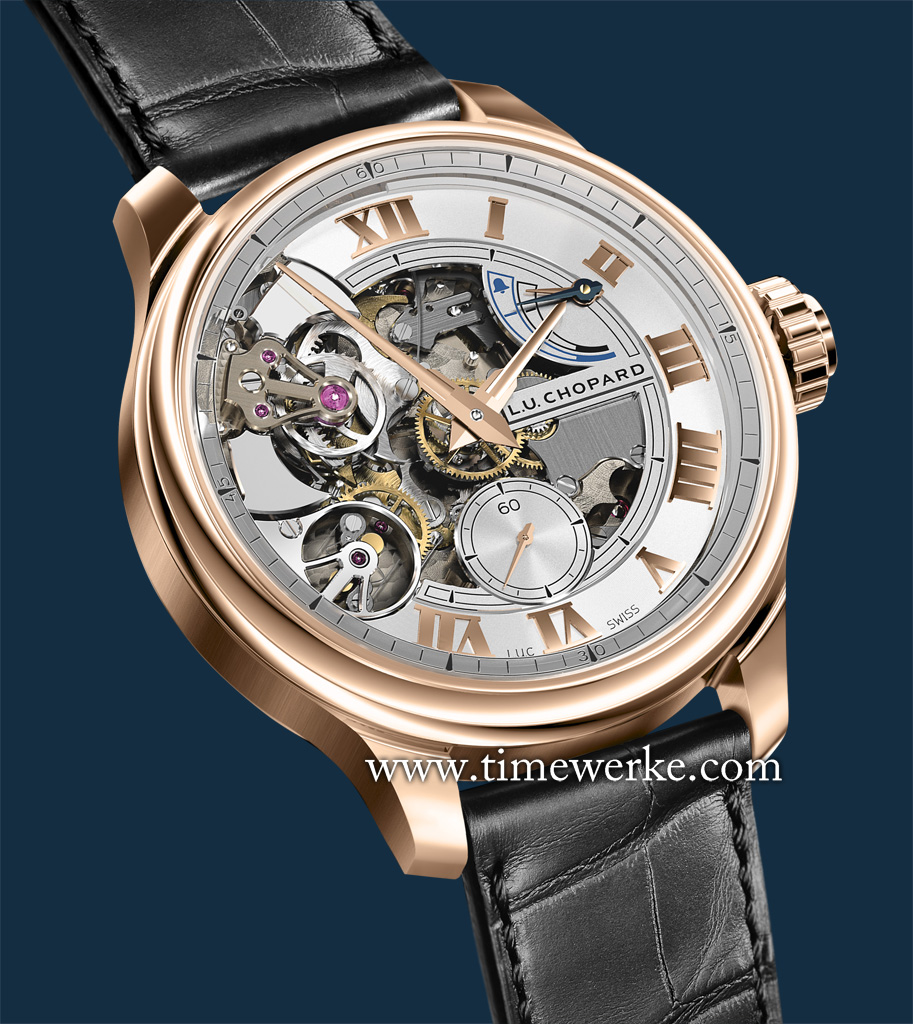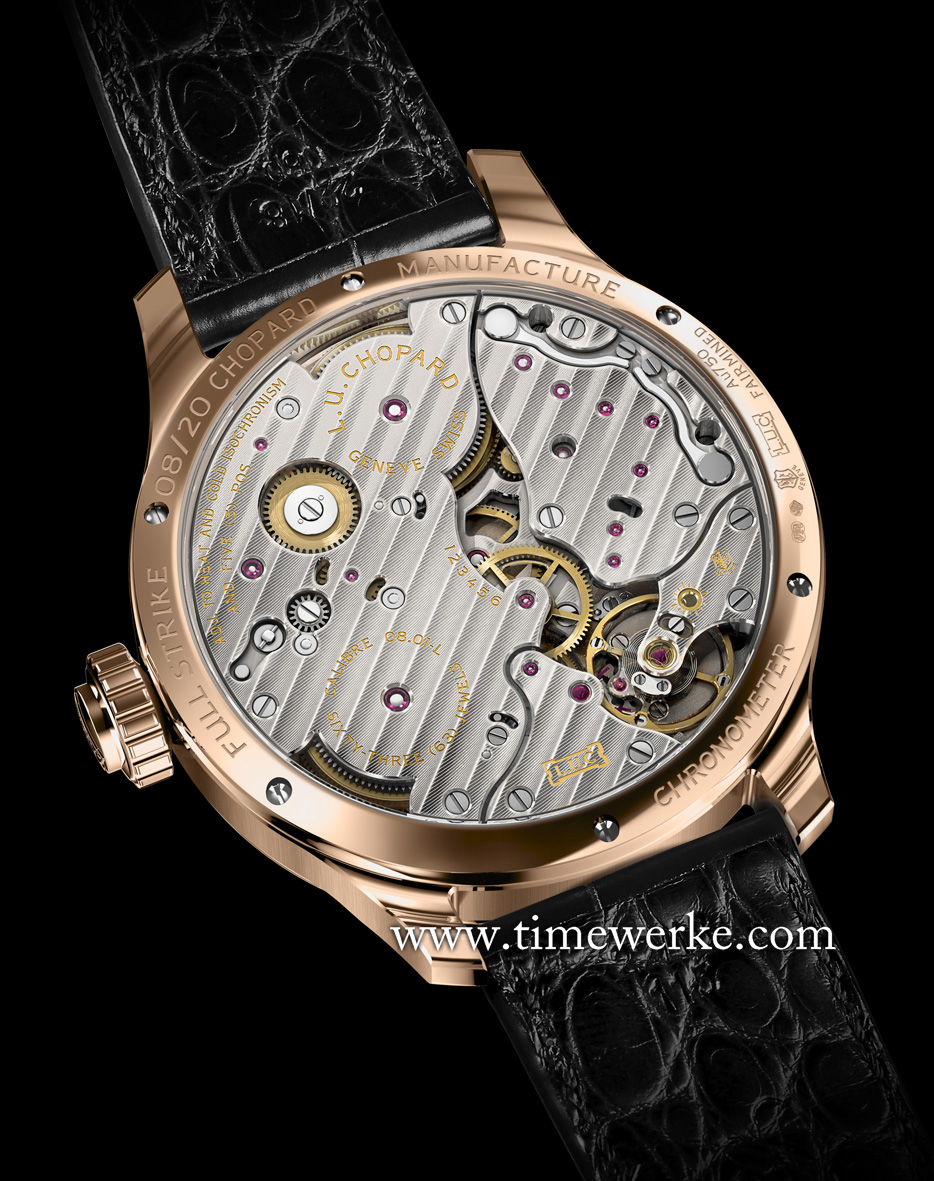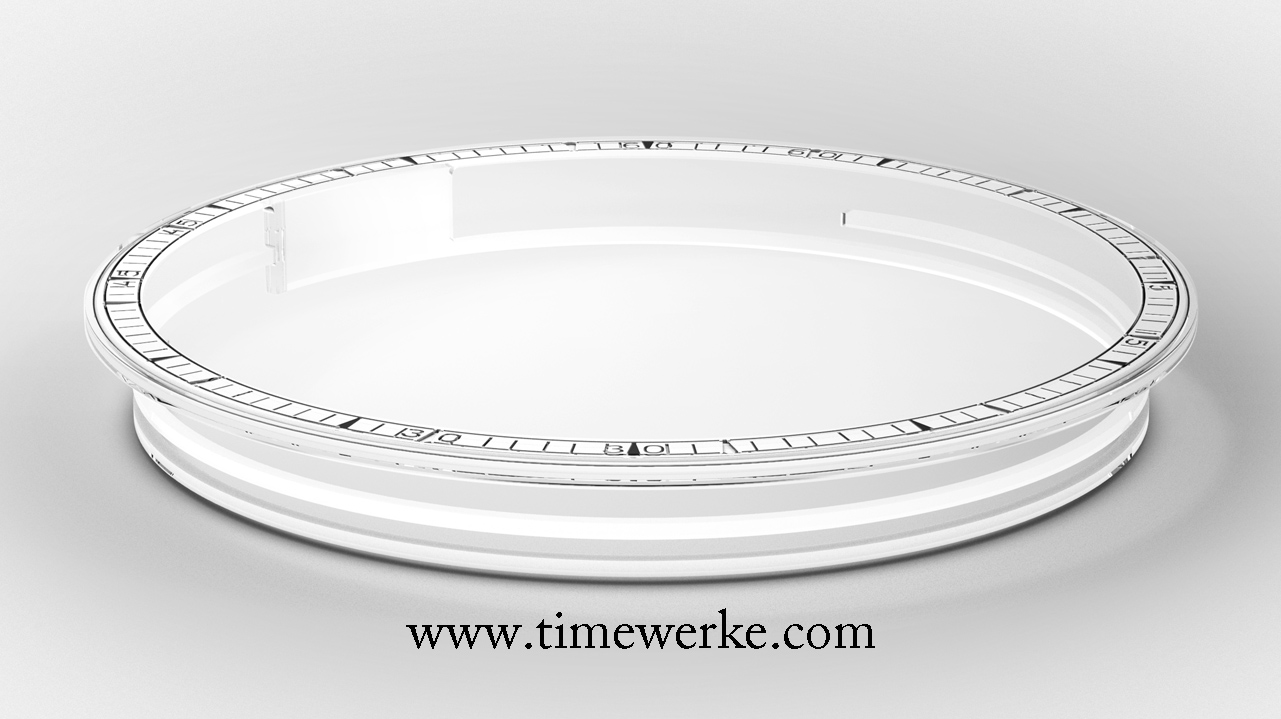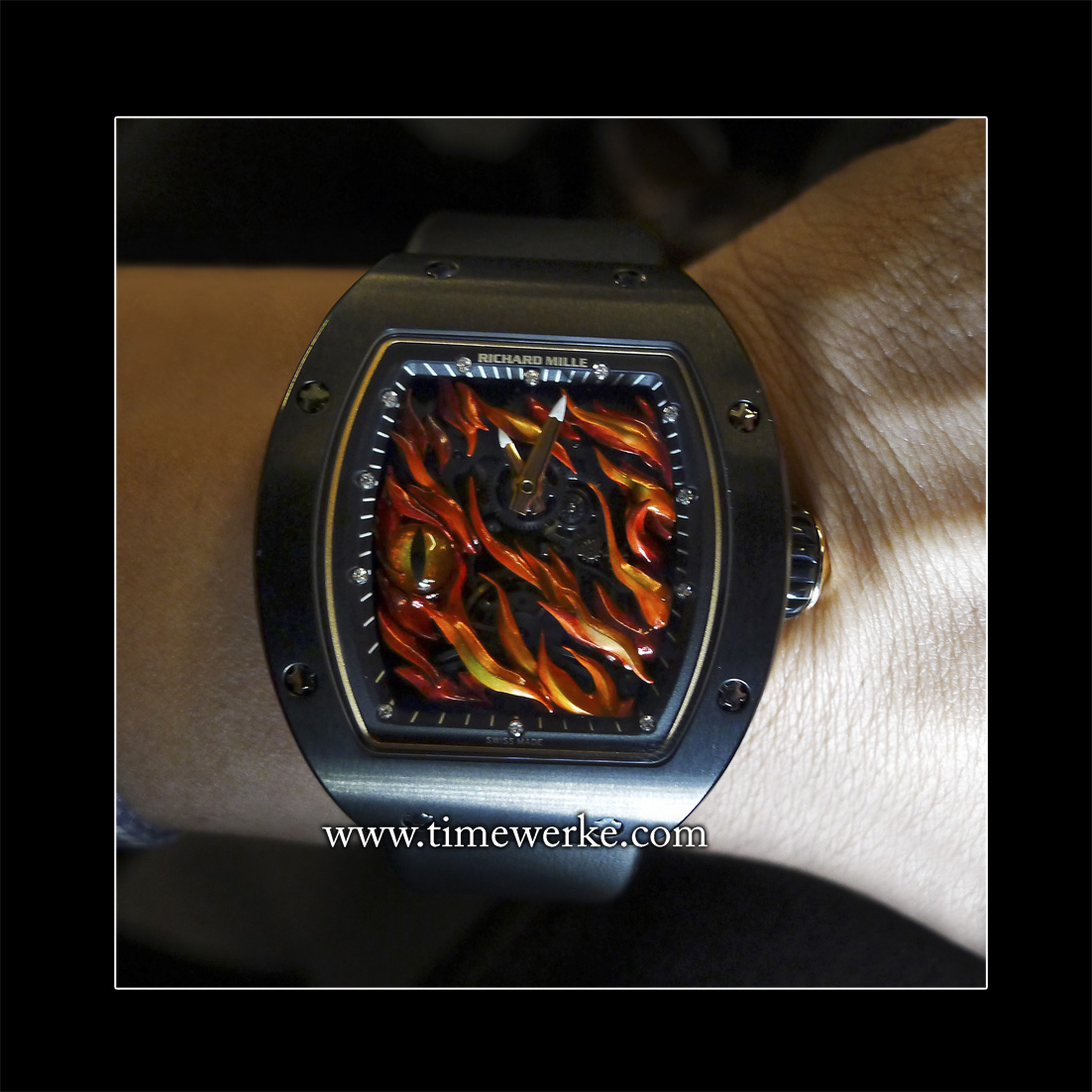
Richard Mille Tourbillon RM 26-02 Evil Eye. Introduced in 2015, it features the Calibre RM26-02 manual-winding movement and tourbillon. The case of the RM 26-02 Evil Eye is made of TZP black ceramic where 95% of the material is in yttrium zirconium. Limited to 25 pieces. Photo: © TANG Portfolio.
What is the “evil eye”? The “evil eye” is a malevolent glare or look given to someone or an object that casts a magical curse related to supernatural harm on the person or thing.
Such a concept is known in many cultures and it is known as Ayin Harsha in Arabic, Mauvais œil in French, Dhristi in Hindu and Ayin Ha’ra in Hebrew.
Not only is it mentioned in ancient Greek and Roman texts, it is also found in the Bible.
Under Proverbs 23:6 in the King James version of the Bible, it states: “Eat thou not the bread of him that hath an evil eye, neither desire thou his dainty meats.”
How can one counter the evil eye?
There are various counter measures such as protective talisman like the Eye of Horus amulet, the Jewish red string or the Irish four leaf clover.
The method will depend on the culture and geographic region, according to an article on livescience.com, which adds that amulets using the colour blue (which symbolises heaven or godliness) and an eye symbol can be worn in addition to charms, potions and spells. Even saying the word “garlic” can be used to defend oneself against the evil eye.
For Richard Mille, the answer lies on their Tourbillon RM 26-02 Evil Eye which features not one but two evil eyes – one on the front and the other at the back, which means double protection against any potential evil eye threats.
What are some situations whereby Richard Mille’s Tourbillon RM 26-02 Evil Eye may come in handy?
Well, what if someone unexpected “bursts” onto the scene unexpectedly with naughty intent and tries to draw the attention of important people around you away? This was perhaps what happened to Italian movie actress Sophia Loren in 1957 and an “eye incident” occurred – read this article for more: Was Sophia Loren giving Jayne Mansfield the “Evil Eye”?
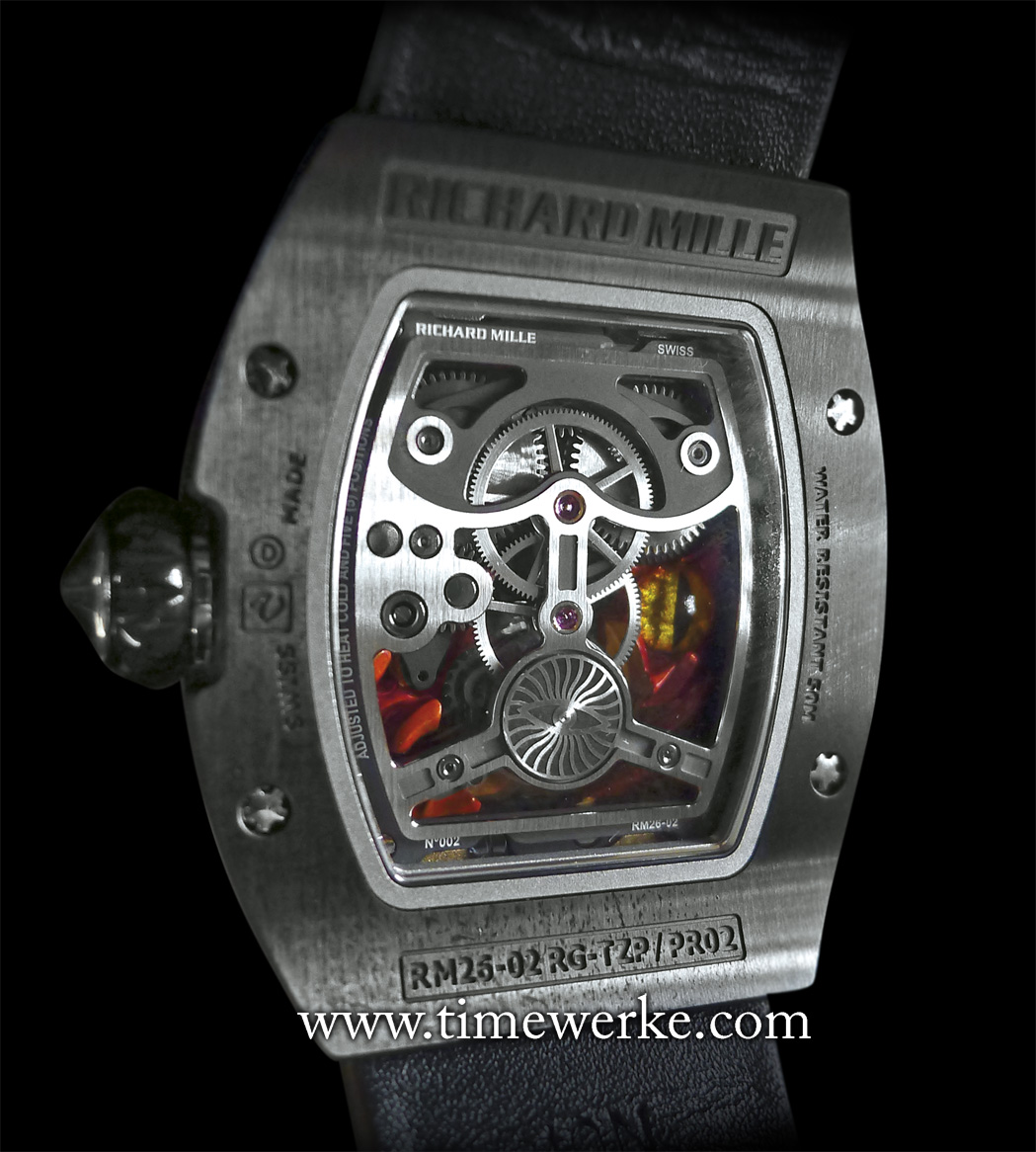
Case back of Richard Mille’s Tourbillon RM 26-02 Evil Eye. The burning flames and evil eyes (one on the front, the other at the back) are Grand feu enamel and micro-lacquer artwork made by Olivier Vaucher. Photo: © TANG Portfolio.
The evil eyes on the RM 26-02 are created by Olivier Vaucher from 3N red gold with the flames and eyes hand-carved using specially-made chisels. Grand feu enamelling is used on the eyes which are painted onto the gold dial using oxides before being fired at high temperatures of between 800 degrees and 900 degrees Celsius several times.
These are then finished with several more layers of translucent lacquer which are fired under high temperatures as well. Even micro-lacquerwork is hand-applied on the flames.
The Calibre RM26-02 manual-winding movement is protected by a black TZP ceramic case. The case middle is in 5N red gold while the bezel and caseback are in TZP black ceramic.
TZP black ceramic is a low-density material that is highly scratch-resistant and has a low thermal conductivity coefficient. It is 95% made of yttrium ziroconium.
In addition to the “evil eye” protection, do note that this is a tourbillon. Speaking of protection, the safety feature for the Richard Mille Tourbillon RM 26-02 Evil Eye is the torque limiting crown which prevents accidental overwinding of the tourbillon movement.
As they say, “prevention is better than cure.”

